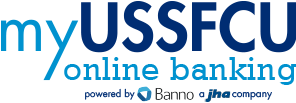Amortization Basics: How Much Home Do You Own?
Published: November 3, 2017
When you buy a home, you usually don’t pay the whole price at once. Instead, you finance it with a mortgage and make monthly payments. In this context, amortization is the process of breaking down a mortgage into regular installments. Knowing how it works can help you understand how much of your home you own over time. Here’s a guide to amortization during the life of a typical mortgage loan.
How it Works
Let’s say you have a mortgage of $200,000 at a fixed rate of 5% for 30 years, and you made no down payment. Your mortgage payments will stay the same each month, at $1,073.64, so that by the final month your whole mortgage will be paid off.
Within that monthly figure, you pay interest and principal, or a monthly segment of the amount borrowed, $200,000. Together, they equal the monthly payment. So the first few months might look like this:
|
Month |
Payment |
Interest |
Principal |
Amount Owed |
|
1 |
$1,073.64 |
$833.33 |
$240.31 |
$199,759.69 |
|
2 |
$1,073.64 |
$832.33 |
$241.31 |
$199,518.38 |
|
3 |
$1,073.64 |
$831.33 |
$242.31 |
$199,276.07 |
|
4 |
$1,073.64 |
$830.32 |
$243.32 |
$199,032.75 |
Every mortgage payment you make has a different mix of interest and principal. From this table, you can see that the interest decreases and the principal increases each month. At first, you pay much more interest than principal, but eventually the proportions reverse.
After that fourth month, you’ve put in only $967.25 toward the home itself. In other words, if you paid $93.70 per square foot for a new single-family house, which is a recent national average from the U.S. Census, then you now own a little more than 10 square feet. That’s the equivalent of about a third of a walk-in kitchen pantry.
Building Equity
Each time you pay principal, you add to your equity in the home. Equity is the difference between your home’s appraised market value and your remaining mortgage debt. Toward the latter half of the mortgage, you build equity more quickly since more of your payment goes to reducing the principal than to covering the interest.
In the case above, at the halfway point of a 30-year loan, your monthly interest and principal amounts are almost even, and you’ve paid $64,232.18 of the $200,000 mortgage. From the same U.S. Census metric above, you now own 685.5 square feet, or a 300-square-foot master bedroom, a similar-sized kitchen, one or two closets and the entire walk-in kitchen pantry. Here’s a look at this and other benchmarks:
|
Month |
Payment |
Interest |
Principal |
Amount Owed |
|
180 (15 years) |
$1,073.64 |
$567.81 |
$505.83 |
$135,767.82 |
|
270 (22.5 years) |
$1,073.64 |
$338.23 |
$735.41 |
$80,439.51 |
|
360 (30 years) |
$1,073.64 |
$4.45 |
$1,069.19 |
$0.00 |
By the three-quarter mark, or 22 years and 6 months, you have $119,560.49 of equity in the home. In other words, you own another 590 square feet, or roughly enough for a 140-square-foot master bathroom, two 200-square-foot bedrooms and some of the foyer. This is in addition to the previous rooms.
Your final payment consists almost entirely of principal and effectively pays off the mortgage. You now own every square foot in your home.
Understanding how amortization works can help illustrate how much equity you build in your home over time. If you see better mortgage rates down the road, knowing your equity might help you decide whether to refinance or stay the course with your current loan.
© Copyright 2016 NerdWallet, Inc. All Rights Reserved



